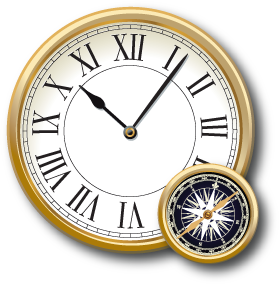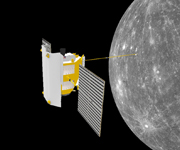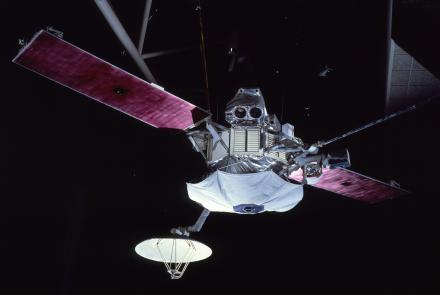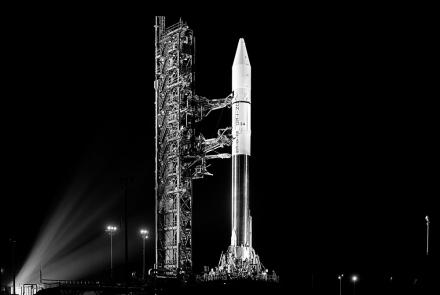To reach destinations beyond the Moon, space navigators learned to take advantage of gravity.
A spacecraft can use the gravity of one celestial body to propel it toward another. While the trajectory is longer than a more direct route, a “gravity assist” saves fuel. But it requires complex calculations, precise navigation, and atomic clocks for timing. Many planetary missions would be impractical without gravity assist because of the extra fuel and larger rockets they would otherwise need.
Helping Hand from Gravity
Launched in 1973, Mariner 10 used the gravity of Venus to propel it to Mercury with minimal use of fuel.
To reach Mercury, Mariner 10 first passed by Venus, threading through a narrow 400-kilometer (250-mile) “window” of space a few thousand kilometers above the surface. That level of accuracy had not been possible with the navigation systems available for the Pioneer 4 mission in 1959. After a gravitational assist from Venus, Mariner 10 entered an orbit around the Sun that allowed it to pass by Mercury three times in 1974 and 1975.









